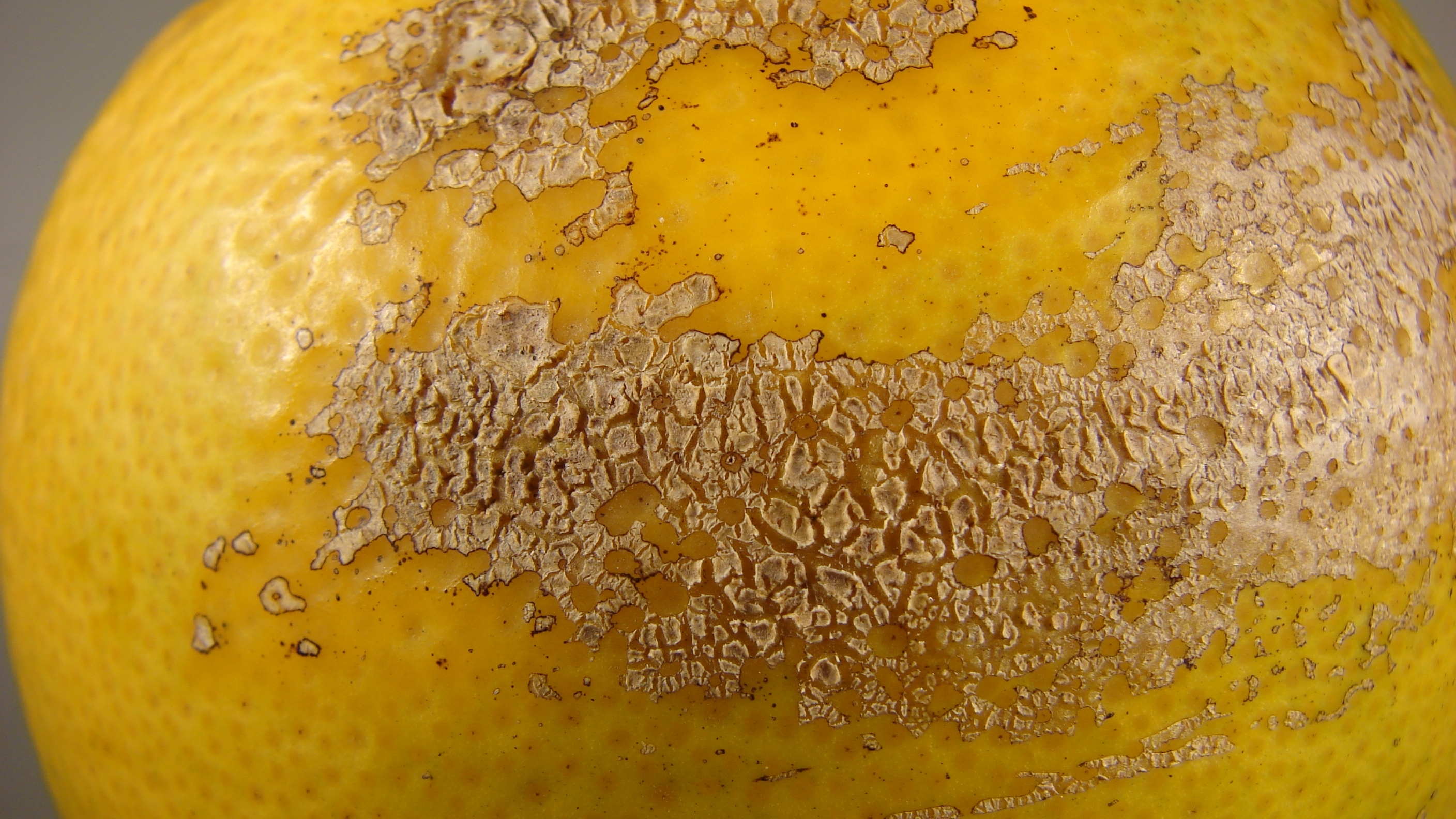Sweet Orange Scab

Sweet orange scab is caused by the fungus Elsinöe australis. Many citrus species and hybrids are vulnerable. Infection causes scab pustules that give fruit a corky appearance. Sweet orange scab can stunt young nursery trees or new field plantings and cause premature fruit to drop.
E. australis is spread by rain, irrigation, and the movement of infected plants. The fungal damage is superficial. It does not impact fruit quality and poses no danger to people, but the blemishes reduce marketability. In the United States, sweet orange scab was first detected in 2010 in residential citrus trees in Texas. It has since been confirmed in Alabama, Arizona, California, Florida, Louisiana, and Mississippi.
Sweet orange scab symptoms may be confused with other diseases, like citrus canker, or with environmental injuries. Symptoms may also vary by region due to differences in environmental conditions, like humidity.
Here are general symptoms to look for:
- Fruit and stems
- Scab-like lesions appear on young fruit. They are slightly raised and pink to light brown in color. (Lesions on orange and grapefruit are sometimes flatter.) As they expand, the lesions become cracked or warty and change to a yellowish-brown to dark gray color. Scabs are usually dispersed in the same pattern as water being splashed on fruit.
- Leaves
- Lesions begin on leaves as water-soaked spots which evolve into pustules. Typically, lesions are found on the underside of leaves near the mid-vein or border. Lesions on young tissue are usually raised, while lesions on mature tissue are usually flatter. Infected leaves can become irregularly shaped, stunted, or puckered.
View images of sweet orange scab.
Note: Sweet orange scab can be easily confused with other diseases, including citrus canker. For a positive identification, reference our Field Guide for Sweet Orange Scab (936.9 KB).
- Don't move citrus trees. This is the fastest way sweet orange scab and other citrus diseases spread.
- Inspect your citrus trees regularly for infection.
There is no cure or treatment for sweet orange scab.
Report Signs of Citrus Disease
If you think you’ve seen signs of this disease or pest, immediately report your findings to a State Plant Health Director.

